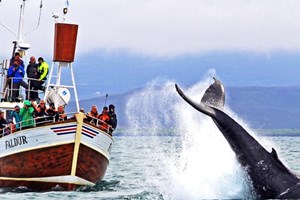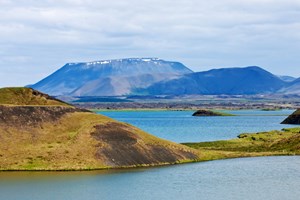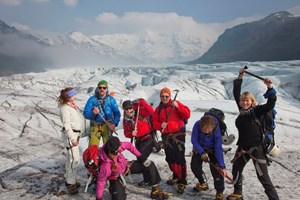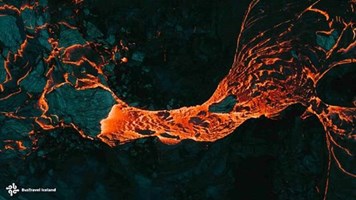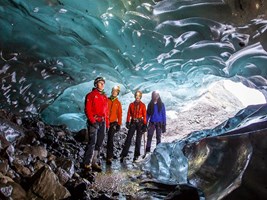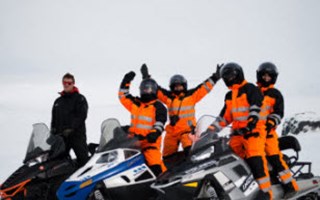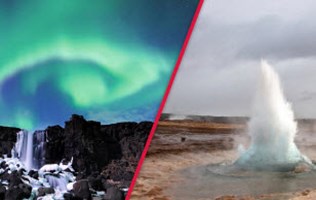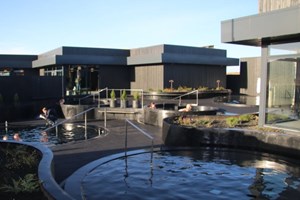Grenjaðarstaður Turf House in North-Iceland and the Story of my Ancestors
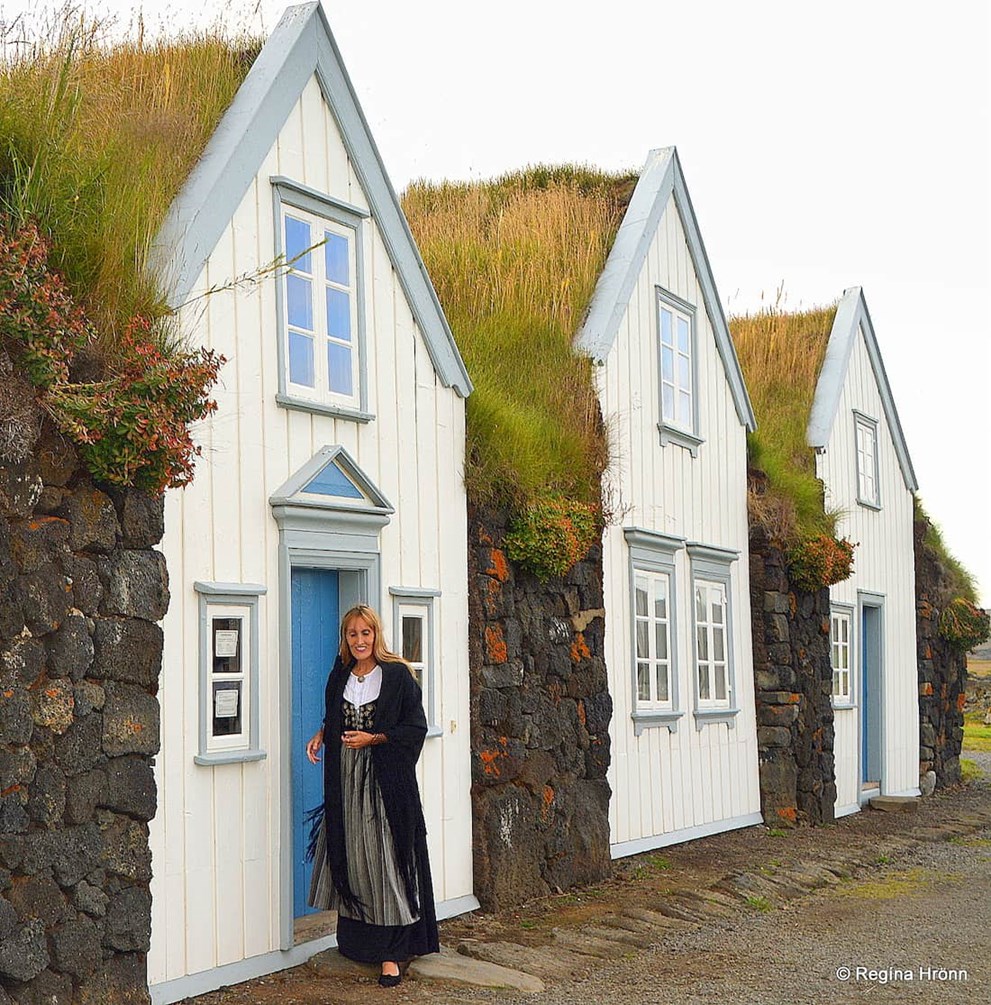
Visiting Grenjaðarstaður turf house
Grenjaðarstaður turf house in North-Iceland is one of the big turf houses in Iceland, but there are only a few of them left in my country. Most of these big turf houses are now open as museums.
I want to tell you about my roots in North-Iceland, and tell you why I travel up north and visit the beautiful turf house at Grenjaðarstaður every year 😊
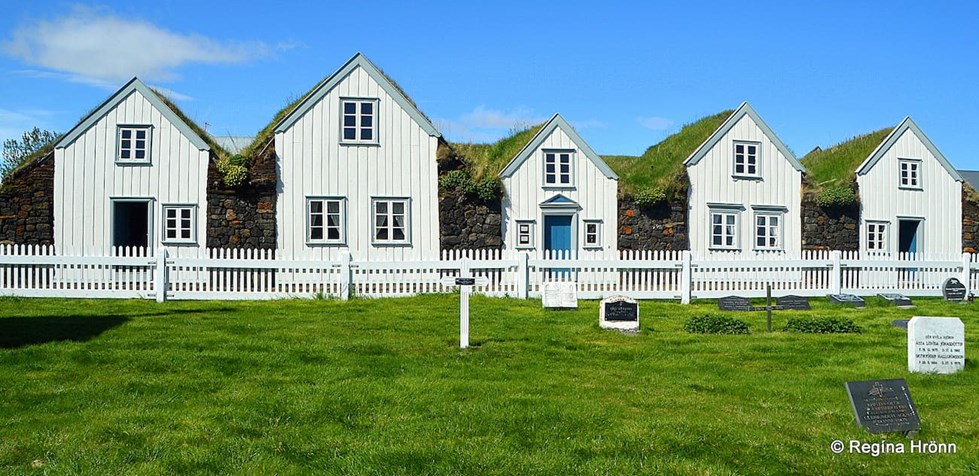
Grenjaðarstaður turf house
I am a big fan of the traditional turf houses in Iceland and seek them out on my travels in my country.
The turf houses are our inheritance from past generations, as this was the traditional building method here in Iceland, and both rich and poor lived in turf houses.
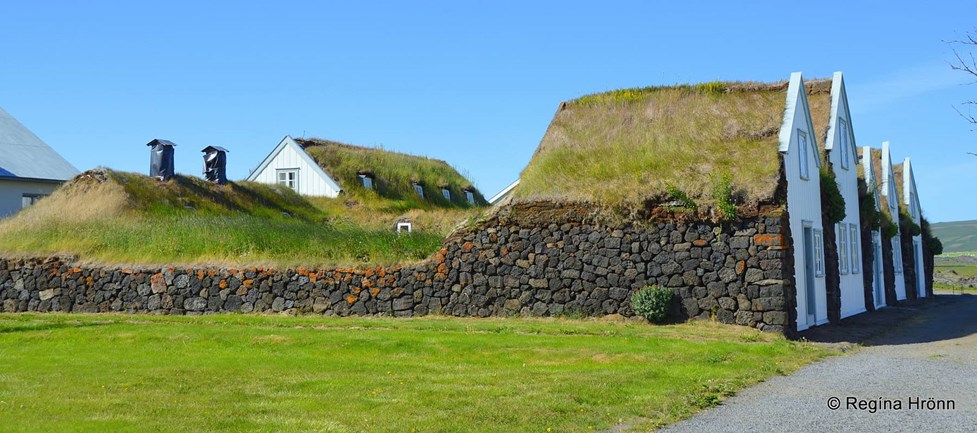
Grenjaðarstaður turf house
There are not many original turf houses left in Iceland though as they need constant maintenance.
The last turf house inhabitants moved out in around 1966, but the last inhabitants moved out of Grenjaðarstaður turf house around 1949.
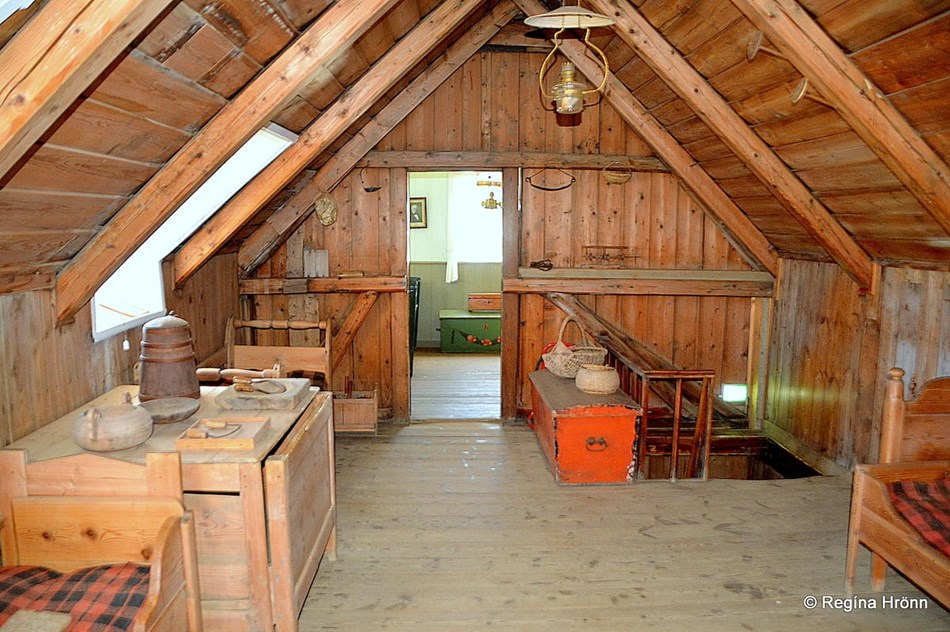
Inside Grenjaðarstaður turf house
Most of the biggest turf houses are in the possession of Þjóðminjasafn Íslands – the National Museum of Iceland and now serve as museums.
Visiting these turf houses gives us an opportunity to peek into Iceland‘s old architectural heritage. It feels like stepping back in time.
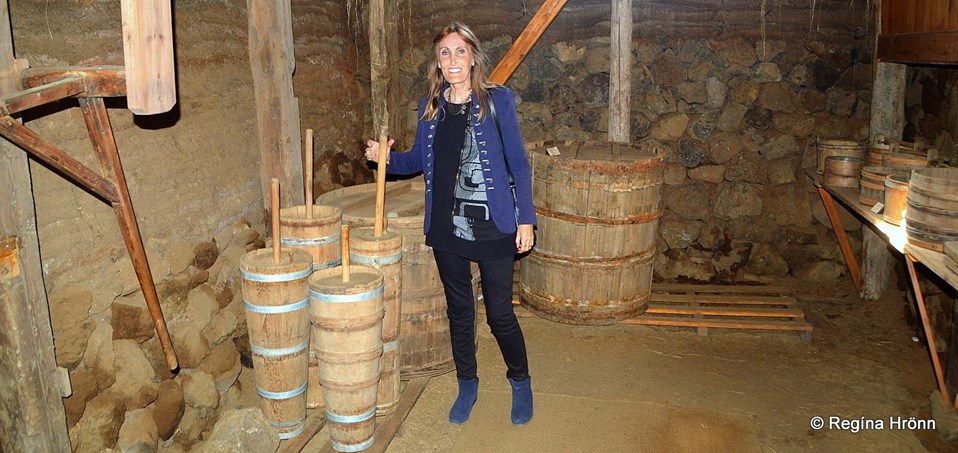
Inside Grenjaðarstaður turf house
From the early settlement of Iceland over a thousand years ago, there was a homestead here at Grenjaðarstaður.
Grenjaður Hrappsson settled this area and lived at Grenjaðarstaður, which is named after him.
Many ancient place names in Iceland can be traced to the settlers and it is interesting reading the Icelandic Sagas and Landnáma – the Book of Settlements which explain to us the origin of many of the ancient place names.
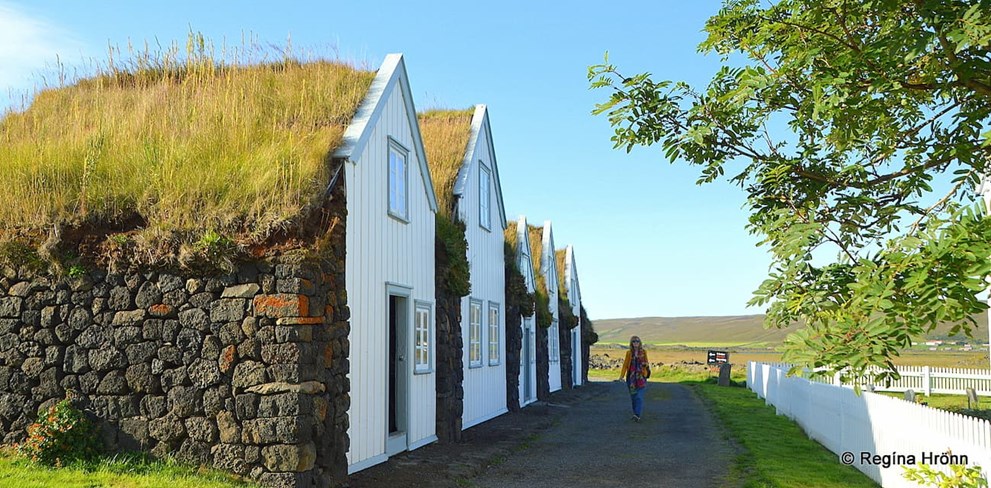
Grenjaðarstaður turf house
The majestic turf house at Grenjaðarstaður was the largest manor in this county, 775 sq.m!
The present turf house at Grenjaðarstaður dates back to the 19th century, and the oldest parts of it date back to 1876.
This building material, turf or sod, was used as it was cheap and convenient. It insulated the houses and kept the cold out, which was essential during the long and cold winters in Iceland.
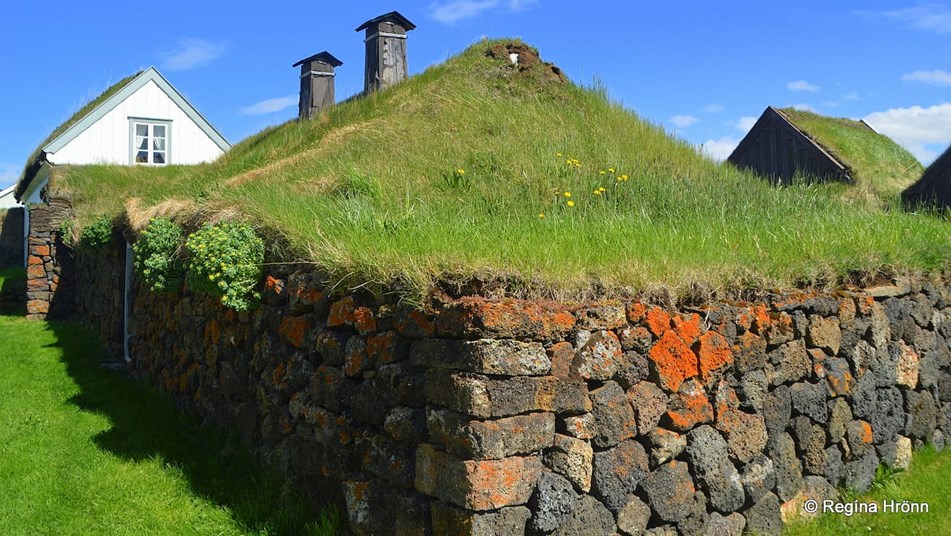
Grenjaðarstaður turf house – lava walls
The outwalls of Grenjaðarstaður are made from doubly stacked lava, of which there is plenty in this area, and no turf is used in the outwalls of this turf house.
Lava was the building material in the areas of Iceland, where there is volcanic activity, but two eruptions created the lava fields in this area thousands of years ago.
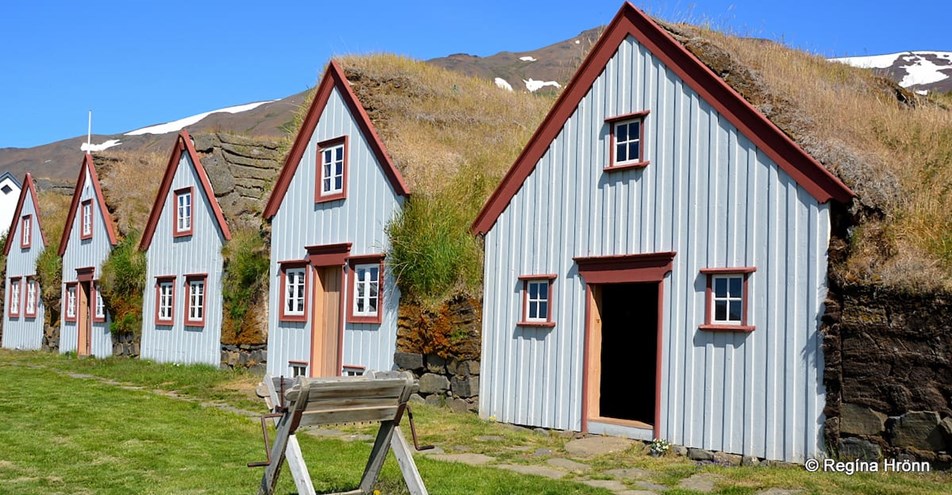
Laufás turf house
If you visit other turf houses in Iceland, like Laufás turf house you might notice that they are not all built in the same way, although they are similar in appearance.
In other parts of Iceland where turf was easily available, the turf was used for the walls of the houses.
You can see in my photo above of Laufás turf house in Eyjafjörður fjord in North-Iceland, that there is much more turf used in the walls than at Grenjaðarstaður.
My ancestors at Grenjaðarstaður
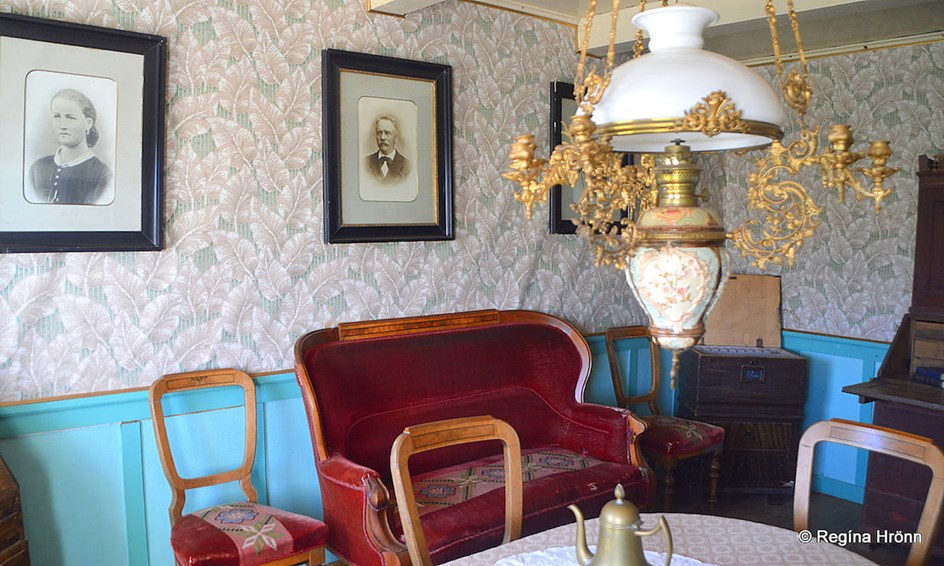
Inside Grenjaðarstaður turf house
Now I want to tell you a bit about my ancestors who lived here up north.
Rev. Benedikt Kristjánsson (1840-1915), my great-great-grandfather, became a minister at Grenjaðarstaður in 1876.
He restored Grenjaðastaður completely in 1892-1894, apart from the door to the east and the northern parlor.
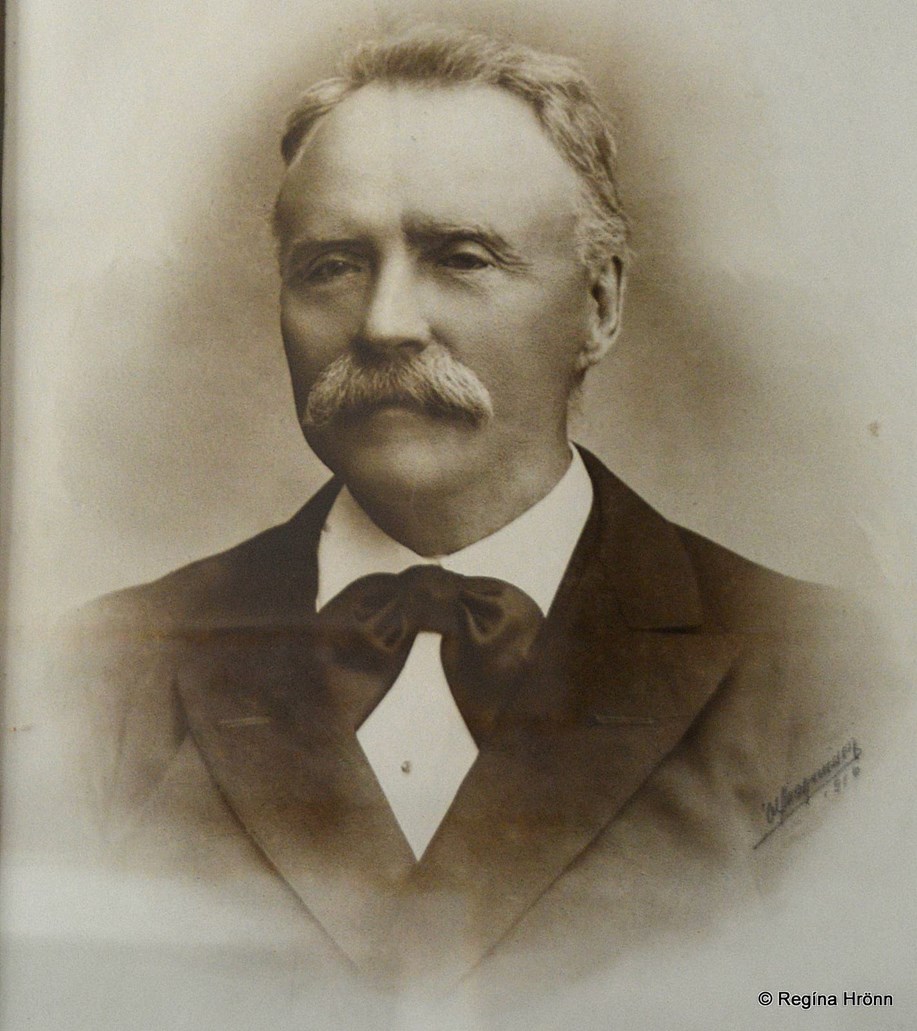
My great-great-grandfather Benedikt
Benedikt had a big family, and domestics and many elderly people were also living at Grenjaðarstaður. So this was a big household.
In 1880 for example 28 people were living at Grenjaðarstaður: Benedikt and his wife Regína, their 7 children aged 1-9, the former minister of Grenjaðarstaður Magnús Jónsson, Helga, the widow of Jón, who was another former minister of Grenjaðarstaður, Sigurlaug who was the mother of Rev. Benedikt, 5 male farmhands, 8 female farmhands, 1 "húskona" and her son, and 1 pauper.
A post office was also located at Grenjaðarstaður, so one can imagine what a busy farm it was.
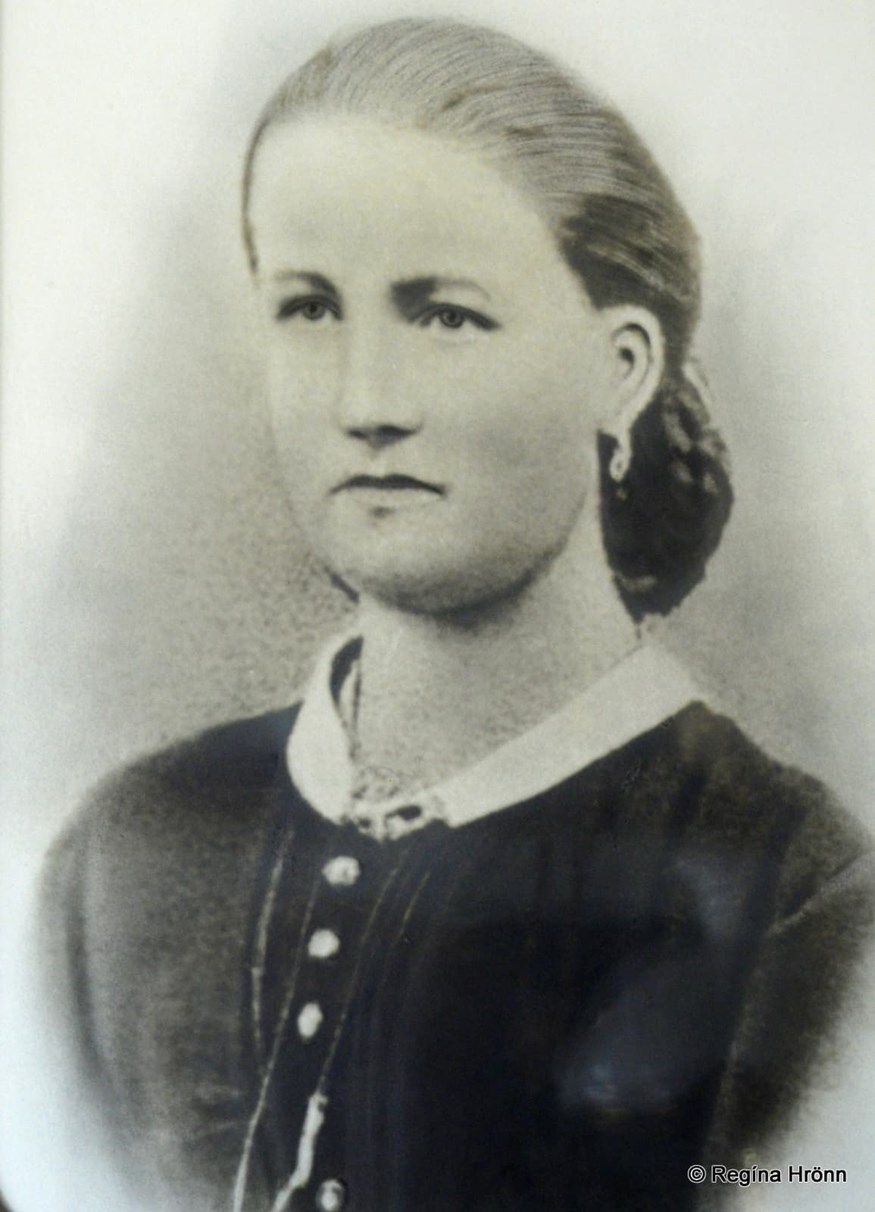
My great-great-grandmother Regína Magdalena
Benedikt Kristjánsson was the minister at Grenjaðarstaður from 1876-1907 - and then managed Grenjaðarstaður until 1911.
When you visit Grenjaðarstaður turf house you will see the photos of my great-great-grandparents hanging on the wall in the first room you enter to the left.
There the photo of Rev. Benedikt is mounted on the wall between his two wives; Regína on his left-hand side, and his second wife, Ásta on his right-hand side.
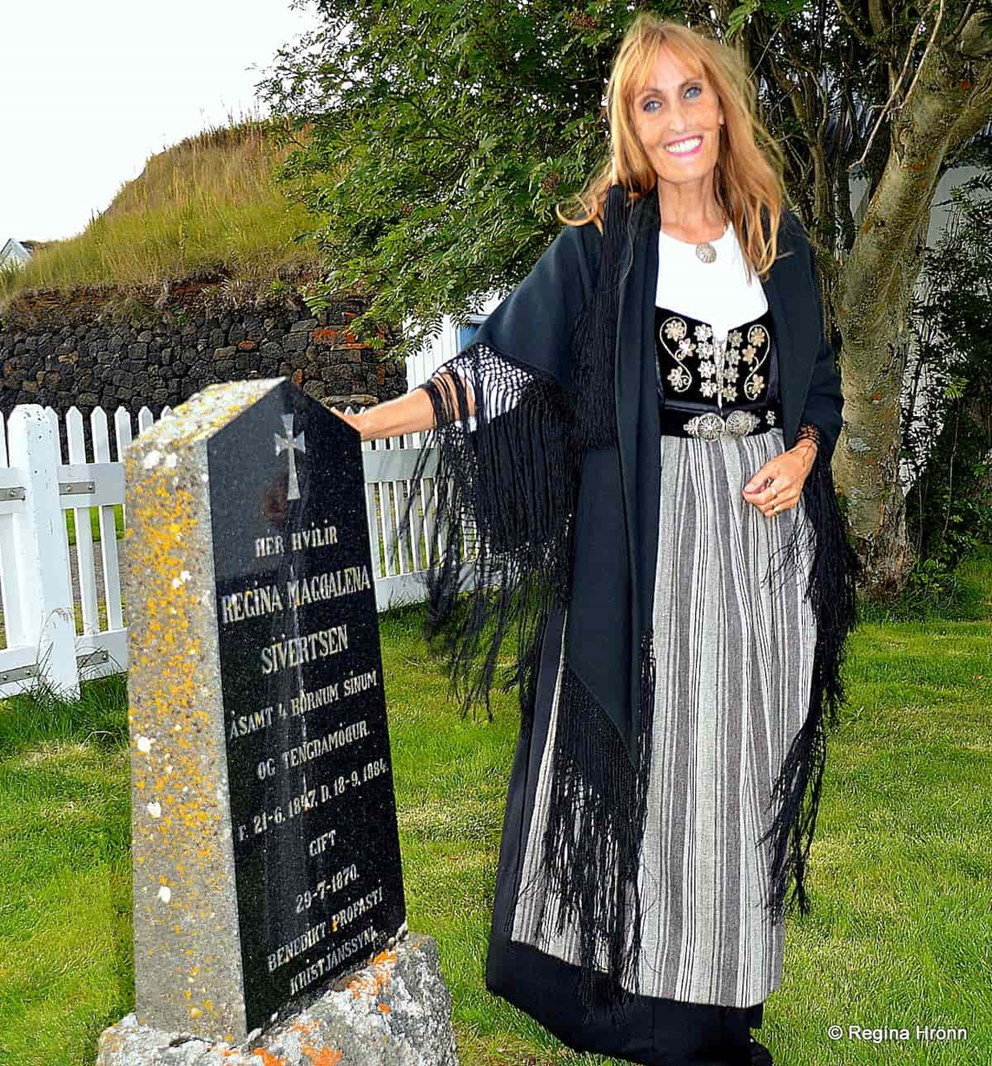
By Regína's grave – here 6 of my relatives are buried
Benedikt's wife, Regína Magdalena Sívertsen (1847-1884), my great-great-grandmother, is buried in the graveyard by the church at Grenjaðarstaður along with 4 of her small children and her mother-in-law, my great-great-great-grandmother Sigurlaug.
From late July until the beginning of December 1882, my great-great-grandparents had lost half of their children: Kristján (6), Gunnar (3.5), Ingibjörg (2), and Rannveig (8 months old).
My great-grandfather, Bjarni, who was 5 years old at the time this tragedy struck my ancestors, lived a long life and had 15 children of his own in Húsavík.
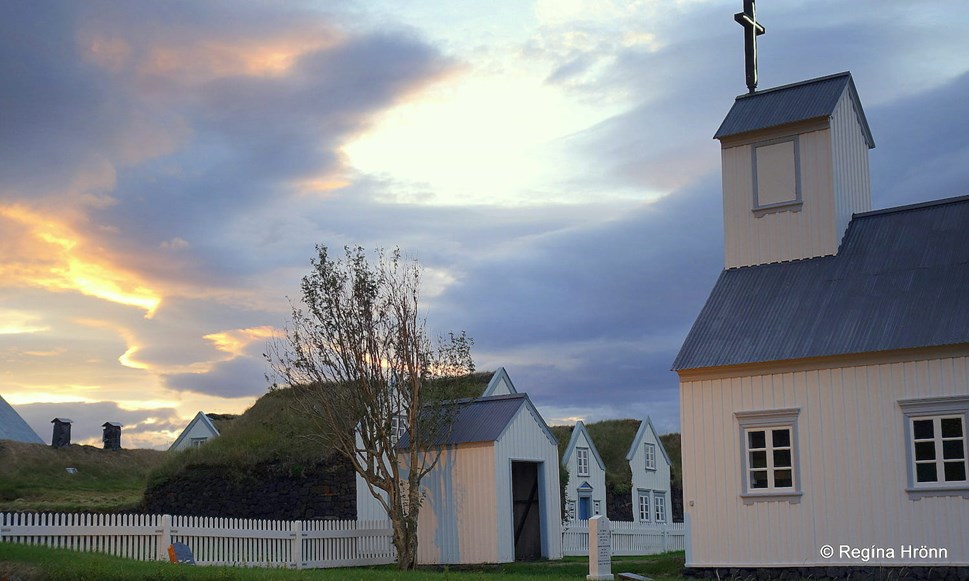
Grenjaðarstaður and Grenjaðarstaðarkirkja church in the dusk
Regína also got measles and was pregnant with her 9th child at the time, a girl born on the 1st of March 1883 who fortunately lived a long life.
But my great-great-grandmother wasted away, got consumption, and died a year and a half later, in 1884.
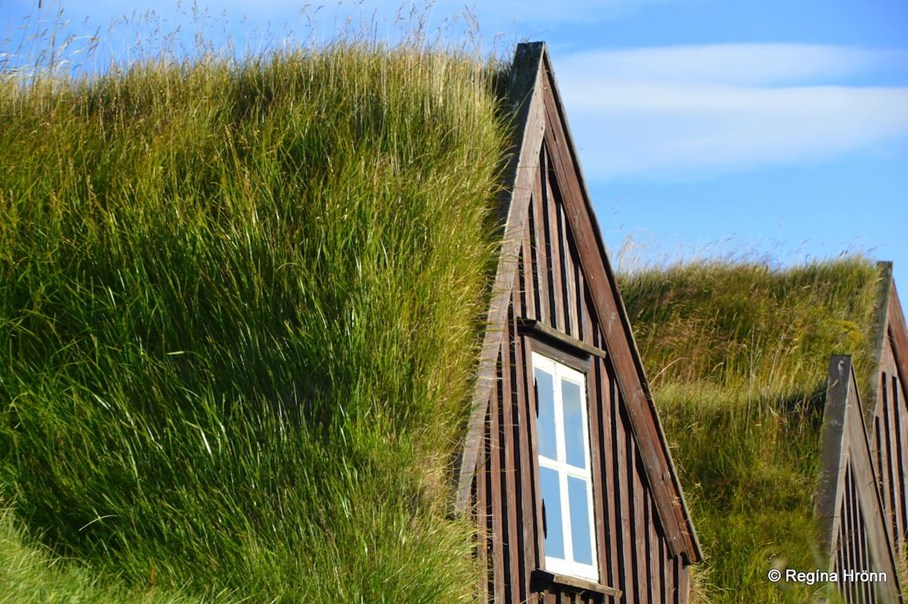
Grenjaðarstaður turf house
On top of this tragedy, the weather was horrible in 1882 and this period from 1881 has been called "Frostaveturinn mikli" - or the Winter of the great Frost.
Drift-ice closed the harbours, a snowstorm raged until mid-June, and storms blocked the sun from the 4th of August until the 29th of August!
(Icelanders experienced another winter like this also called "Frostaveturinn mikli" in 1918).
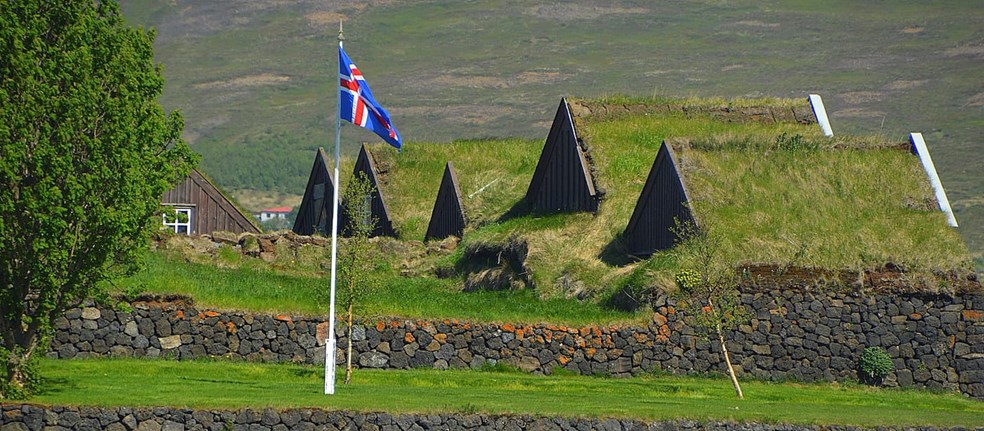
Grenjaðarstaður turf house and the Icelandic flag
The crop failed and the situation in Iceland was so grave that friends of Iceland in Denmark, Norway, Germany, and England collected money for grain which was then shipped to Iceland.
I am named after my great-great-grandmother Regína and when I travel in this area I always go visit her grave and tell her the latest news of her descendants in the SW-corner of Iceland.
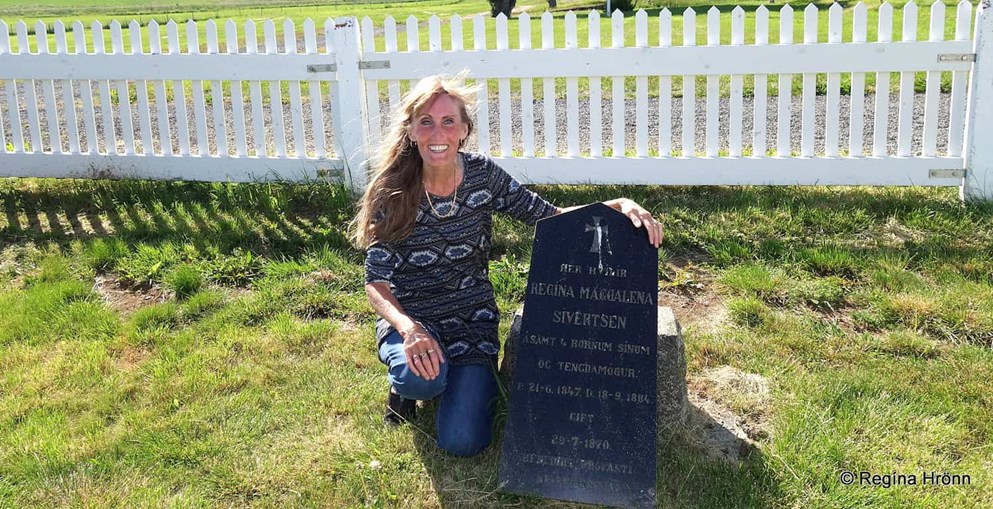
Visiting Grenjaðarstaður in the summer of 2021 – her gravestone broke in a storm
Grenjaðarstaður is located 454 km away from my home in Reykjavík, so it is a bit far for me to visit her grave, but we try to visit this area every year.
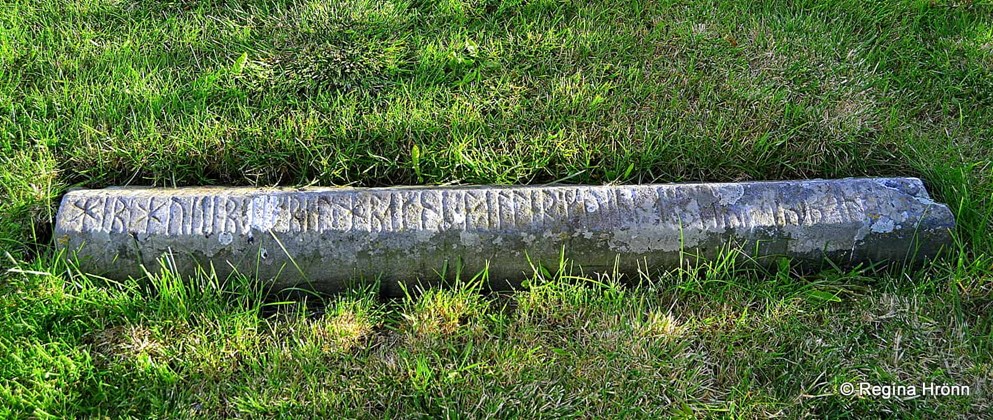
A gravestone with runes
I must point out another gravestone in the graveyard next to Regína's grave. It is a gravestone with runes from the 15th century.
On it is written: "Hér hvílir Sigríð Hrafnsdótter kvinna Bjarnar bónda Sæmundssonar. Guð fríðe hennar sál til góðrar vonar. Hver er letrið les, bið fyrir blíðre sál og synge signað vers" - translated into English: "Here rests Sigríð Hrafnsdóttir, the wife of Bjarni Sæmundsson. May God rest her soul. Whoever reads this, please say a prayer for her gentle soul and say a holy hymn".
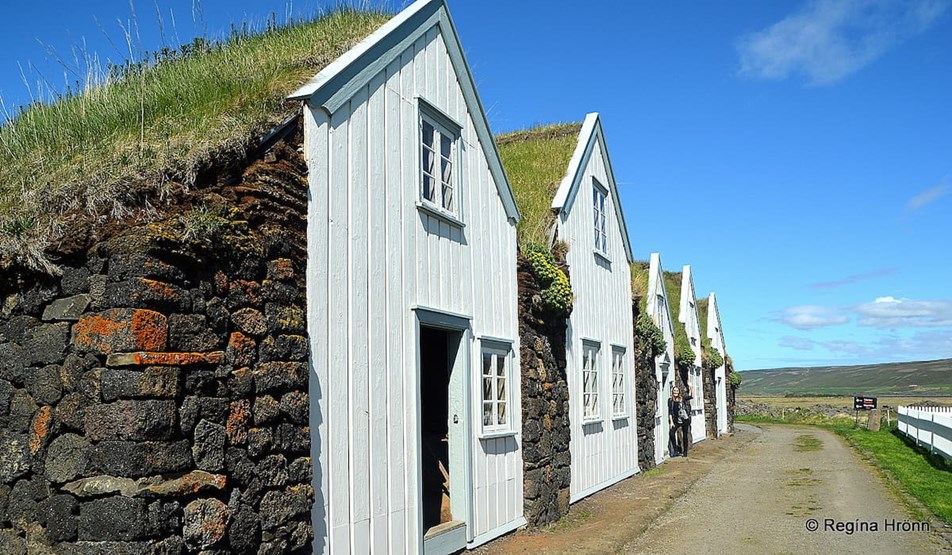
Grenjaðarstaður turf house
In 1915 there were 15 people living at Grenjaðarstaður according to the census.
Four ministers lived at the manor and there were people living here until 1949. The National Museum took over the manor, restored it from 1955-1958 in the liking of its original state, and opened up a district museum at Grenjaðarstaður.
The rooms are kept pretty much like they were when people used to live at Grenjaðarstaður.
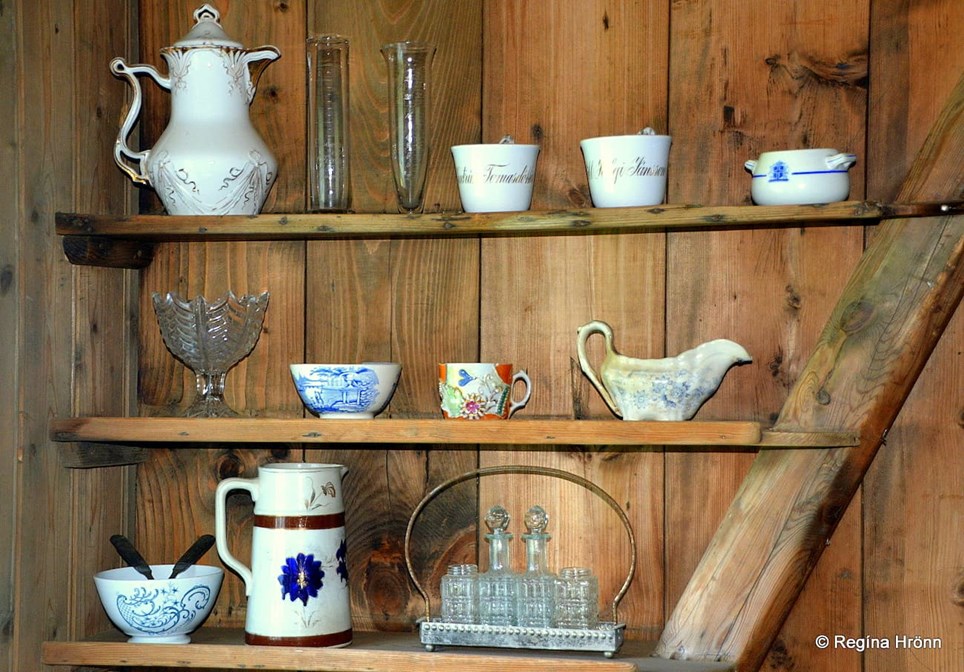
Inside Grenjaðarstaður turf house
For me, it is a delight visiting this old manor seeing how my great-great-grandparents lived.
The rooms are filled with old items from the district. When Grenjaðarstaður was turned into a museum in 1958 the locals from this district donated over thousand objects to the museum.
I especially like the kitchen, seeing all these old lovely plates and old kitchen utensils.
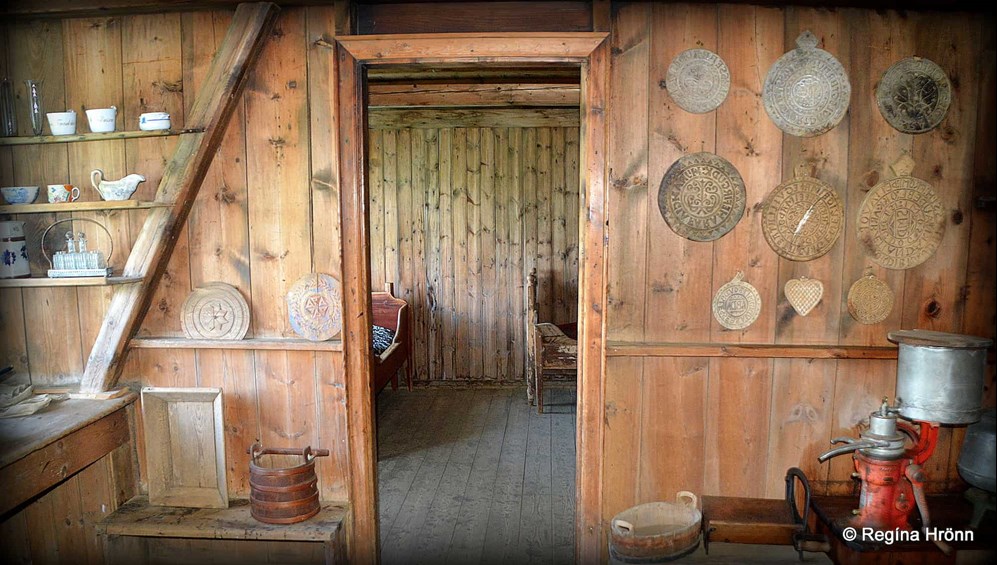
Inside Grenjaðarstaður turf house
Visiting the museum at Grenjaðarstaður gives great insight into the ways the more affluent people lived in the 19th century in North-Iceland, even though this mansion was much larger than the usual turf houses.
My photo below of Galtastaðir-fram turf house in East-Iceland maybe shows more clearly what a more normal turf house looked like.
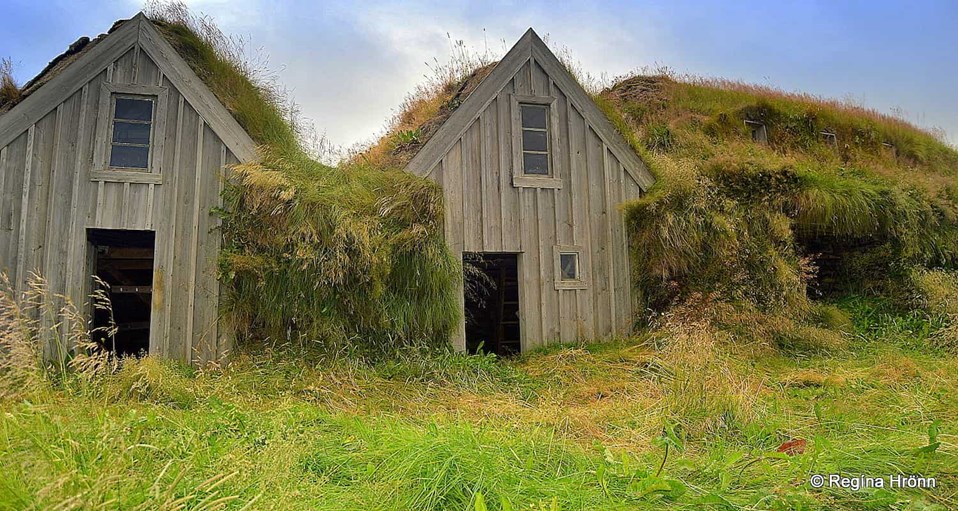
Galtastaðir-fram turf house in East-Iceland
The floors of Grenjaðarstaður are wooden, but one room has got beaten dirt floors.
I have seen these dirt floors in other turf houses and they are very comfortable to walk on.
Grenjaðarstaður turf house is in the possession of the National Museum of Iceland and run by the district museum of this area.
It is open daily from 1st of June - 31st of August from 10-18.
Grenjaðarstaðarkirkja church
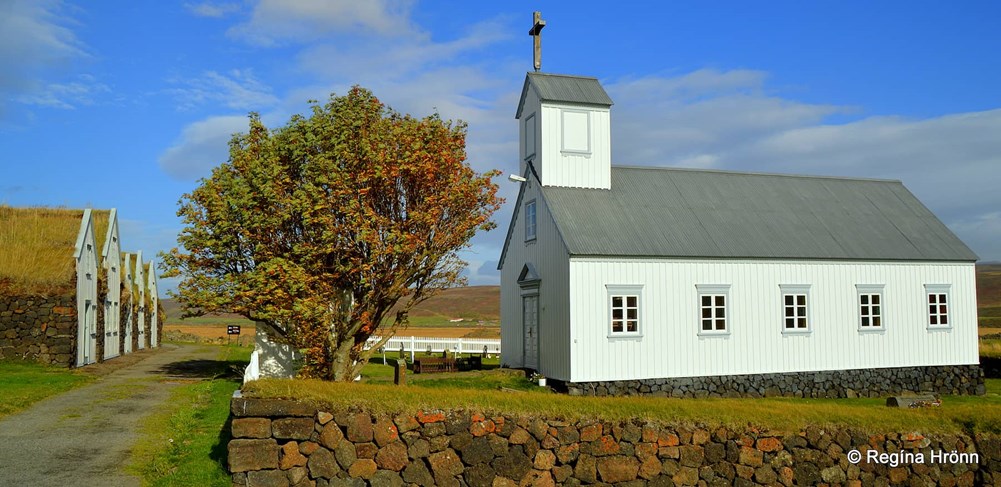
Grenjaðarstaðarkirkja church
Opposite Grenjaðarstaður in Aðaldalur you will find a lovely preserved church, Grenjaðarstaðakirkja.
The current church was erected in 1865 by Rev. Magnús Jónsson, but earlier there were Catholic turf churches here dedicated to Bishop Martein from Tours in France.
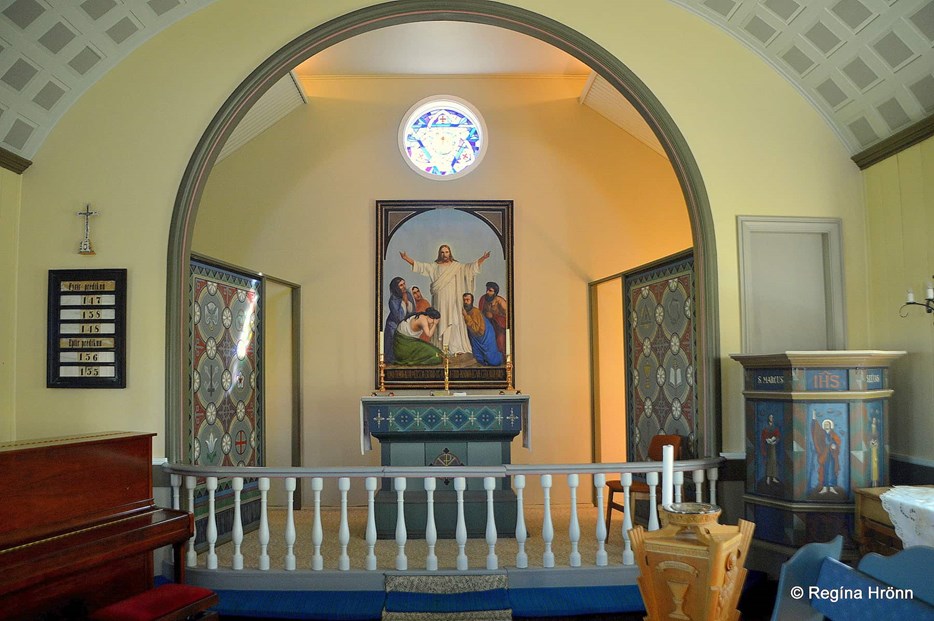
Inside Grenjaðarstaðarkirkja church
The altarpiece in Grenjaðarstaðarkirkja church, which was donated by a minister of the church, dates back to 1865.
Belonging to the church is also a chalice from 1870 and two old copper candlesticks.
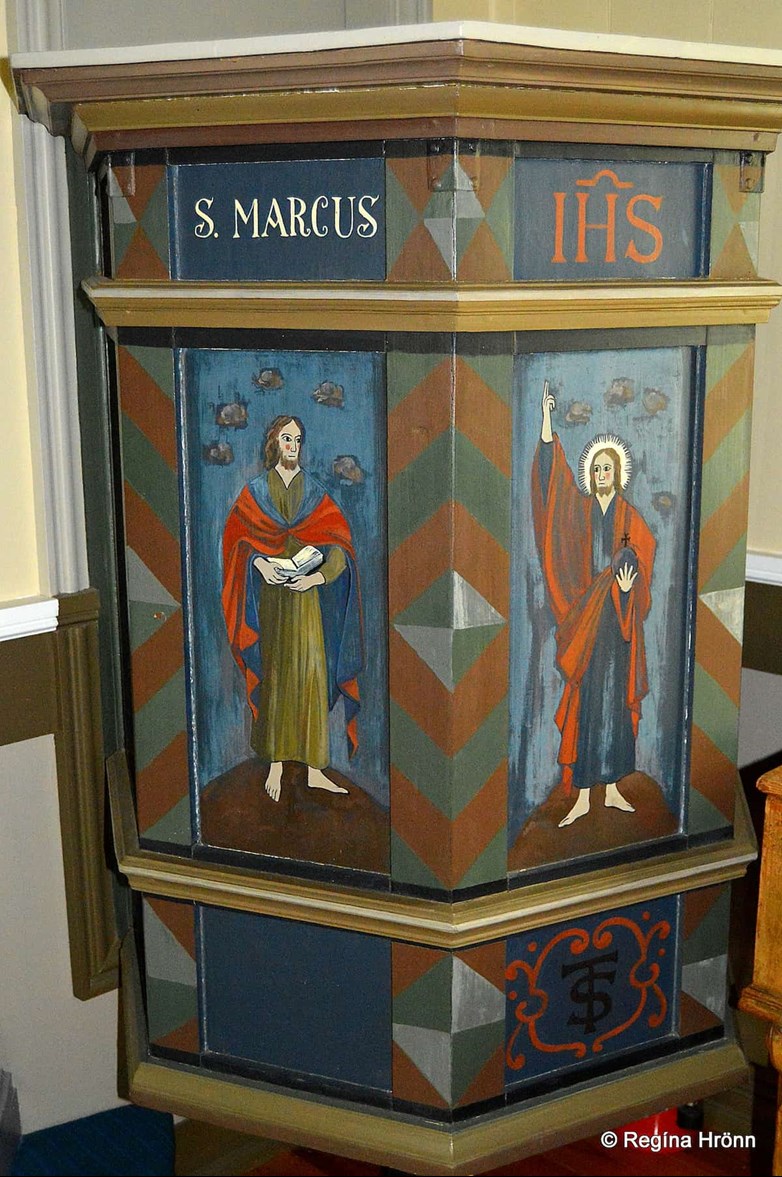
The pulpit at Grenjaðarstaðarkirkja
The year 1797 is painted on the pulpit and the initials of Tómas Skúlason, who was the minister of the church back in 1785-1808.
The church bells in the bell canopy in front of the church are also old by Icelandic standard, dating back to 1663 (the bigger one) and 1740 (the smaller one).
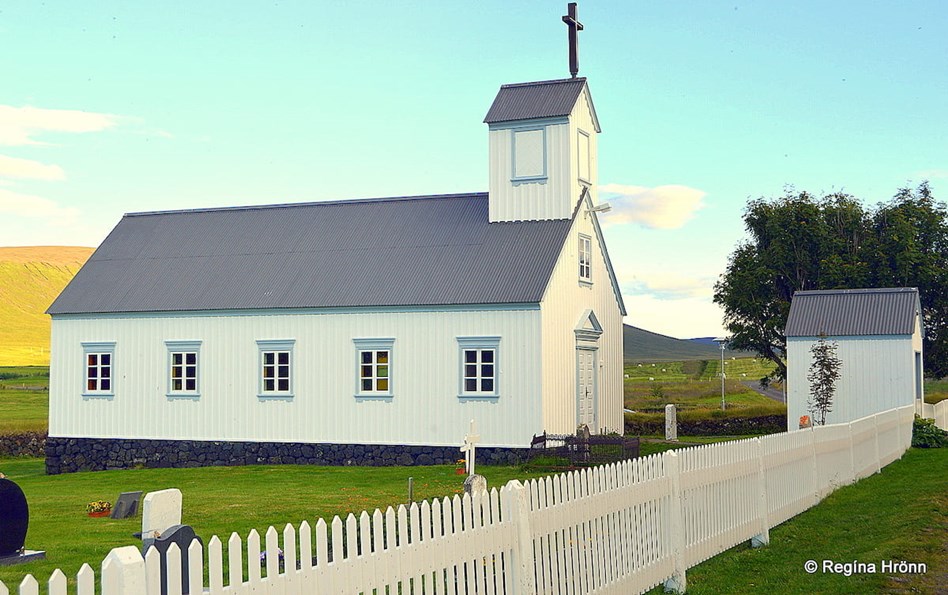
Grenjaðarstaðarkirkja church
In some of the photos in this travel-blog I am wearing the national costume upphlutur, which I was wearing for the 140th anniversary of the annex church from Grenjaðarstaður, Þverá church in Laxárdalur in the vicinity.
My husband took some photos of me wearing the national costume at Grenjaðarstaður, as we both thought that it would look nice for my travel-blog 😊
It is not often that I get the opportunity to dress up in upphlutur in the countryside, so I wanted to make the most of it.
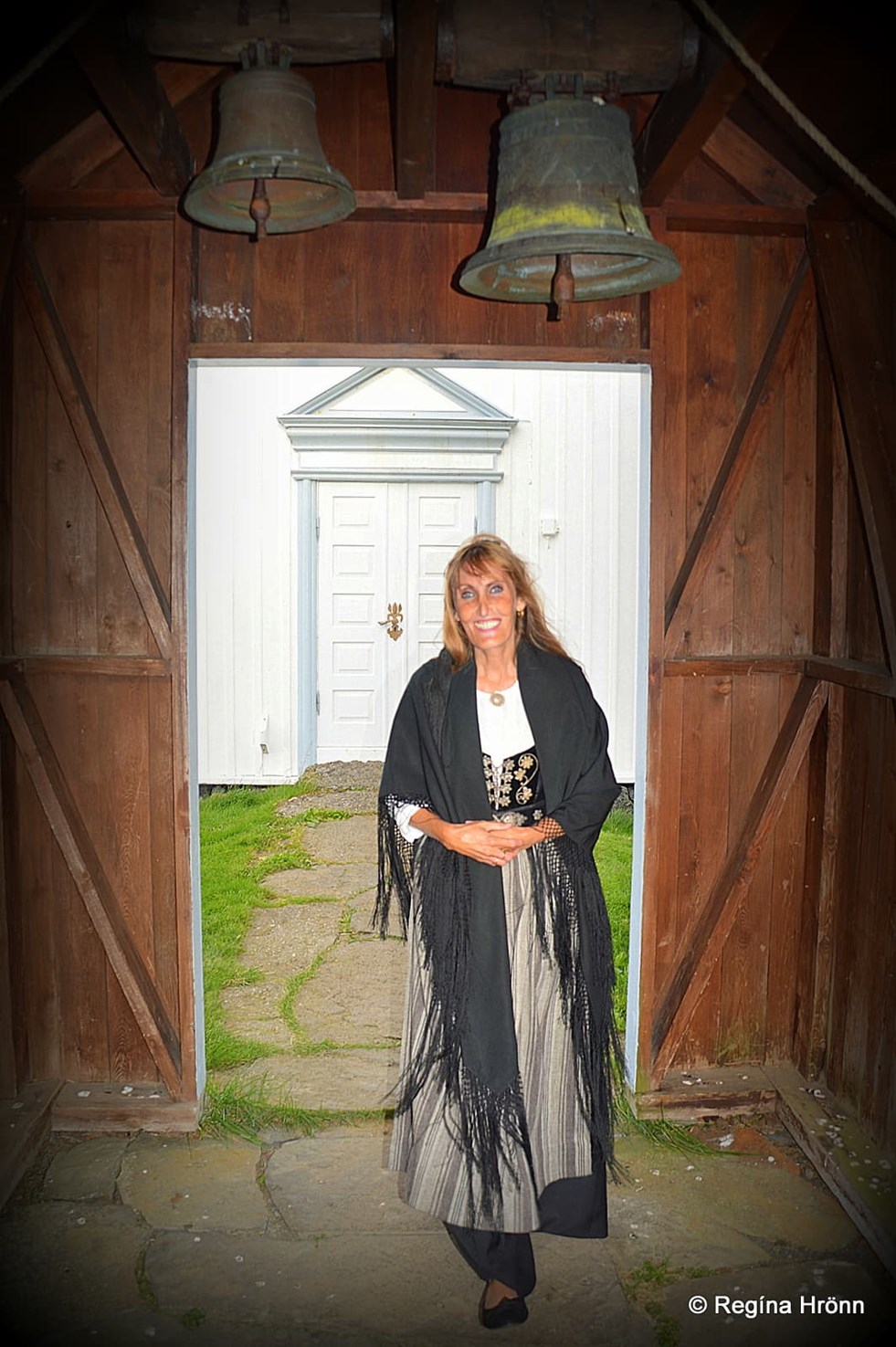
At the lychgate of Grenjaðarstaðakirkja church
Grenjaðarstaður is located at 65° 49,252'N, 17° 21,057'W
Have a lovely time at Grenjaðarstaður and don‘t forget to visit the service building at Hlöðuloftið next to the turf farm– they offer free tea and coffee to their guests :)
